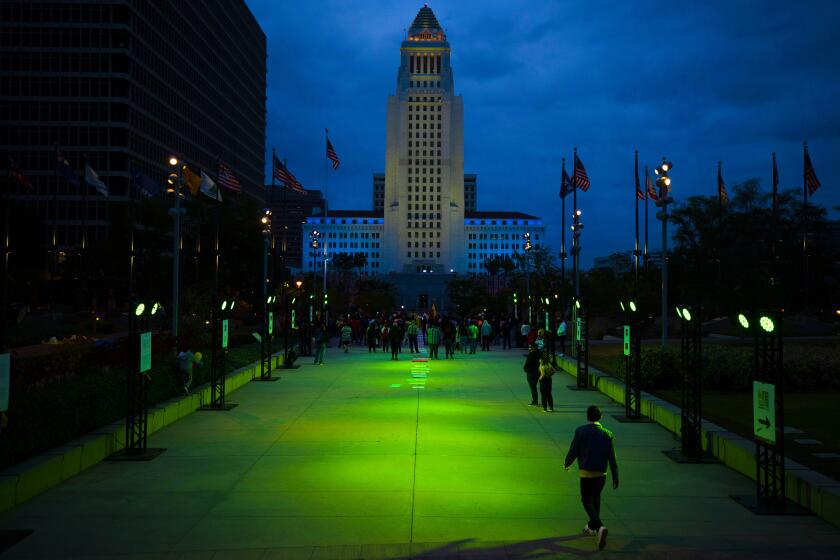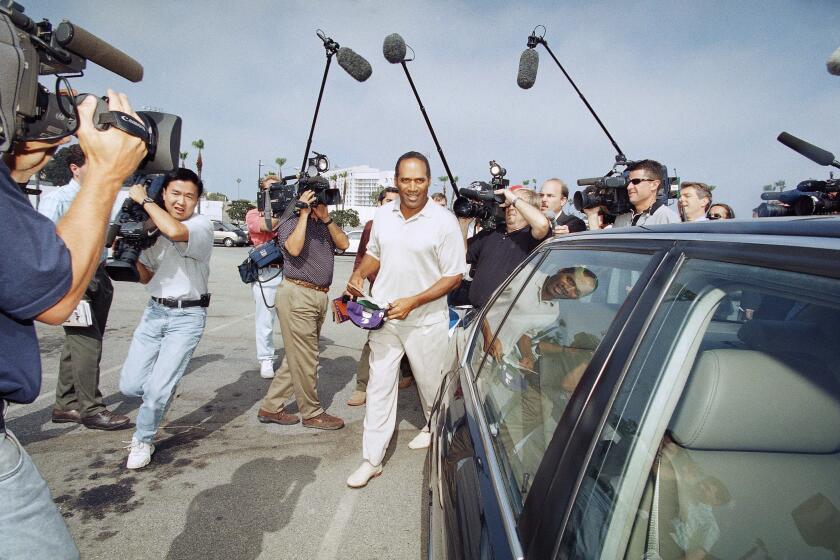Editorial: Are we entering new era for L.A. County, or merely putting new faces on old problems?
For most of the century and a half since its formation, the Los Angeles County Board of Supervisors has been exclusively the province of white males. As of Monday, for the first time in its history, it will have none. The board in fact will be composed of a supermajority of women, with newcomers Kathryn Barger and Janice Hahn joining Hilda Solis and Sheila Kuehl, both of whom are now midway through their first terms. Mark Ridley-Thomas, so recently the new African American kid on a board of old-timers, now takes the chairmanship as the senior member — the only supervisor with tenure longer than two years, and the board’s only man.
Does any of that matter? County government is so mammoth, so sluggish and, to the public, so obscure that it is tempting to greet the historic transition with a shrug and an assumption that it makes little difference who fills the five board seats.
Over the last two years, though, the board began transforming its approach to county challenges. The supervisors sought to limber up county government’s muscle-bound bureaucracy, for example melding its three health agencies and breaking down the barriers that prevented funding and personnel from crossing departmental boundaries.
In theory, the result is smarter, more timely service to people who need it: housing and treatment for people leaving hospitals, jails and other institutions who otherwise would have nowhere to go but the streets (or right back to the hospitals and jails). The county’s efforts coalesced around a 47-point plan to house the homeless and to deal with the mental illness, addiction and economic calamities that are among the root causes of poverty.
County government is so mammoth, so sluggish and, to the public, so obscure that it is tempting to greet the historic transition with a shrug.
The supervisors also showed this year that they could persuade the public to provide more dollars — for parks, recreation and open space in the form of Measure A’s parcel tax, and for transportation infrastructure, operations and maintenance in Measure M’s sales tax. Meanwhile, L.A. City Hall won voter approval for bonds to build housing for the homeless, and that moves the ball right back into the county’s court for perhaps its largest voter challenge yet: to win future funding to maintain the mental health, substance abuse and other social services needed to make a meaningful dent in not just homelessness, but also petty crime and all the other interrelated manifestations of human misery that fall within the county’s ambit.
Barger and Hahn are not standing on ceremony. They haven’t taken office yet but already have co-authored motions with Ridley-Thomas to move forward on a March 2017 ballot measure to fund homeless services. The board, with its two new members duly sworn in, will take them up Tuesday.
Still lacking is a useful and independent assessment of county programs, and any evidence that the board can replicate successes, identify failures and quickly and deliberately change course when programs don’t pan out. One of the new board’s priorities in the coming year ought to be to commission that kind of outside evaluation, and to begin to quantify the county’s progress.
Meanwhile, new challenges arise. Solis is calling on the county to be ready, before the beginning of the Donald Trump administration, to protect some 70,000 residents in the county under the Deferred Action for Childhood Arrivals program. The immigration policies that Trump articulated during his campaign and since — including his threat to deny federal funding to local jurisdictions that don’t aid in deportations — are intimately bound up in the local economy, because of the jobs and revenue produced by immigrants who are here without federal authorization, and because of the poverty that is inherent in any community of people who must do their work and carry out their lives in hiding.
Poverty, in the end, is the chief subject of county government, as much as the supervisors like to note that they also build and operate cultural institutions like museums and concert halls, and crucial infrastructure for services like sanitation and storm water.
So does the advent of a supermajority of women on the board portend anything for the county’s efforts on poverty, or the people who struggle with it?
Certainly. Women are the fastest growing populations in jails, in probation systems and among the homeless, and incarcerated women tend to have higher rates of substance abuse and mental illness — but there has been insufficient study of why. Early or unwanted pregnancy, domestic violence and commercial sexual exploitation add to life’s already daunting challenges for girls and women. Later this month, Kuehl and Solis will propose a program to help fill the knowledge gap on all these issues — and help the Board of Supervisors better understand the population it is trying to serve.
Follow the Opinion section on Twitter @latimesopinion and Facebook
More to Read
A cure for the common opinion
Get thought-provoking perspectives with our weekly newsletter.
You may occasionally receive promotional content from the Los Angeles Times.






